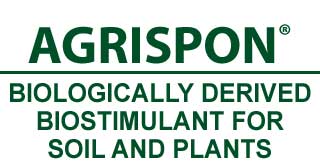AGRISPON enhances root zone activity
Agrispon increases the populations of beneficial microorganisms which can significantly improve soil nutrient supply to roots. For instance, key plant macro nutrients such as nitrogen, sulphur and phosphorus all require microorganisms in the root zone to make them more available to the plant. Many agronomic practices, however, suppress these organisms and hence limit the nutrient supply to the roots, even in situations where adequate fertilizer has been applied. Such is the dependency of the root and soil ecosystem on soil micro-organisms. Root building phosphorus, in particular, is dependent on microbes for its release into the soil, especially in low or high pH soils.
The use of Agrispon in plant fertility programs has led in many crop systems to large improvements in the efficiency of utilization of nutrients such as nitrogen and hence a concomitant reduction in application rate. The use of Agrispon in plant fertility programs has led in many crop systems to large improvements in the efficiency of utilization of nutrients such as nitrogen and phosphorus. Another benefit of increased microorganism activity is improved soil structure.
AGRISPON improves soil structure
This, in turn, improves aeration, as well as water infiltration and percolation. The resultant increase in water intake limits runoff and soil erosion so that more nutrients and moisture are available to the plant. In addition, well structured soil with adequate nutrients helps plants withstand the rigors of environmental stress.
AGRISPON increases profits by reducing costs
Not only does Agrispon enhance plant performance and/or yield, it is also economical to use. In fact, the very low application cost per acre makes it one of the most cost-effective biostimulants available. Furthermore, Agrispon can be applied using virtually all liquid application equipment. Equally important, it is compatible with most liquid fertilizers and most other tank mixed materials.
AGRISPON works in the soil so that the soil works
The soil is your primary long-term asset and Agrispon helps build this asset. Agrispon helps enhance nutrient availability and soils structure without a negative environmental impact. These combined actions help plants obtain applied nutrients and water more efficiently, thus improving their performance as well as their ability to withstand environmental stresses.
Overall the multiple benefits of Agrispon in integrated plant management systems ensure the continued productivity of your soil from one generation to the next.
AGRISPON IS SAFE
Agrispon has undergone extensive scrutiny of the EPA. Agrispon has been registered as a class IV compound, the safest category available. Agrispon carries no residue tolerance restriction

